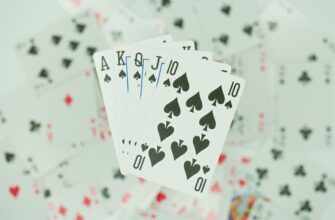What is a Guard Ledger?
A guard ledger is a secure digital or physical system for recording sensitive information—like financial transactions, access logs, or personal data—that requires authentication to view or modify. Think of it as a high-security notebook where every entry is protected by digital “guards.” For beginners, password protection is the most basic yet crucial layer of security, acting as a lock preventing unauthorized access to your confidential records.
Why Password Protection is Non-Negotiable
Without password security, your ledger becomes vulnerable to:
- Data theft: Hackers can steal financial details or personal information.
- Unauthorized changes: Malicious actors could alter transaction records.
- Privacy breaches: Sensitive data becomes exposed to prying eyes.
Password protection transforms your ledger from an open book into a fortified vault, giving beginners control over their data security.
Setting Up Your First Password-Protected Guard Ledger
Follow these beginner-friendly steps to secure your ledger:
- Choose your platform: Select user-friendly software like Google Sheets (with password add-ons), Notion, or dedicated apps like LedgerLive for crypto.
- Enable password features: In settings, activate password protection or encryption (often under “Security” or “Privacy”).
- Create a strong password: Combine 12+ characters with uppercase letters, numbers, and symbols (e.g.,
Blue$ky42!Wallet). - Store backups securely: Save password hints (not the password itself!) in a physical safe or encrypted note.
- Test the lock: Log out and verify password prompts appear before re-entry.
Password Best Practices for Maximum Security
Elevate your guard ledger protection with these tips:
- Never reuse passwords: Unique passwords prevent domino-effect breaches.
- Update quarterly: Change passwords every 3-6 months.
- Use two-factor authentication (2FA): Add SMS or app-based verification where possible.
- Avoid obvious hints: Pet names or birthdays are easily guessable.
- Consider a password manager: Tools like Bitwarden generate/store complex passwords securely.
Common Beginner Mistakes to Avoid
Steer clear of these pitfalls:
- Weak passwords like “123456” or “password”—easily cracked in seconds.
- Storing passwords digitally in unsecured notes or emails.
- Ignoring software updates that patch security flaws.
- Sharing passwords via text or chat apps.
Frequently Asked Questions (FAQ)
Q: What’s the easiest guard ledger for absolute beginners?
A: Google Sheets with the “Protected Sheets” add-on offers simple password protection without technical complexity.
Q: Can I recover my ledger if I forget the password?
A> Most systems don’t allow password recovery to prevent hacking. Always store a backup hint in a secure location—never digitally.
Q: Are password-protected spreadsheets secure enough?
A> For basic personal use, yes. For high-risk data (e.g., crypto keys), use dedicated hardware like a Ledger Nano with PIN protection.
Q: How often should I back up my guard ledger?
A> Weekly for active use. Store encrypted backups offline on a USB drive or cloud service with separate login credentials.
Q: Should I write down my password?
A> Only if stored physically in a locked container. Never keep it near your computer or phone.
Mastering password protection for your guard ledger is the first step toward bulletproof data security. Start with strong, unique credentials, avoid common pitfalls, and remember: in digital safety, vigilance is your greatest ally.








